Brian Meert's Blog, page 105
October 8, 2018
New to Instagram: A Personalizable Nametag Feature
 October 8, 2018
October 8, 2018Anna Hubbel, writer at AdvertiseMint, company for Facebook ads

Instagram announced a new feature called Nametag that serves as a customizable identification card. Nametag allows users to easily discover other user profiles with a simple camera scan. Each Nametag is unique to the individual user, almost like a fingerprint, and “makes it quick and fun to add people and accounts you discover in person,” Instagram announced.
How It Works
To customize your Nametag, complete the following steps:
Step 1: Navigate to your Instagram profile.
Step 2: Tap the three lines at the top to open the menu and select “Nametag.”
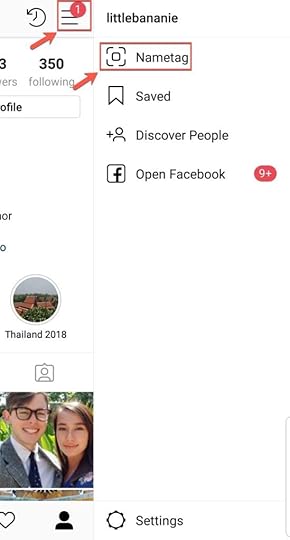
Step 3: Touch anywhere on the screen or tap the button at the top to personalize your Nametag.
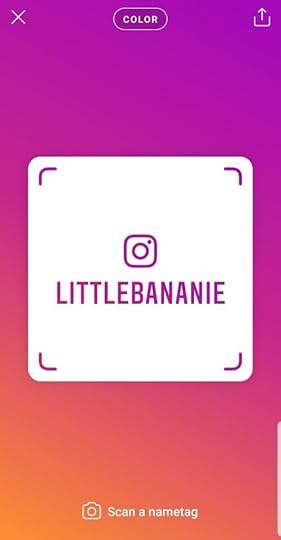
To scan someone else’s Nametag:
Step 1: Open your Instagram camera.
Step 2: Hover over the other user’s Nametag with your camera.
Step 3: Press down on your camera screen to scan their Nametag.
To share your Nametag with other users, simply select the arrow at the top right when viewing your tag to send it via text message, Instagram, Facebook, or WhatsApp.
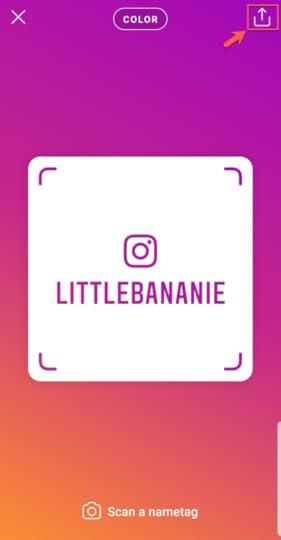
The Benefits of Nametag
The Nametag feature presents potential benefits for both users and businesses alike. It helps users easily connect with others, building on the initial face-to-face friendship right from the get go, setting the foundation for a long-term friendship. It will be especially fun for young users who want to connect with new friends at school.
Businesses can also enjoy the Nametag feature. They can share their own unique Nametag so users can easily scan it and start following the business’s Instagram account, staying up-to-date on the latest products, offers, or services the business posts about. Businesses may also be able to display Nametags on merchandise to encourage users to add them on Instagram, similar to how brands use Snapchat’s Snapcodes.
Written by Anna Hubbel, writer at AdvertiseMint, company for Facebook ads
The post appeared first on AdvertiseMint.
October 5, 2018
7 Automation Tools That Will Make Your Job a Lot Easier
 October 5, 2018
October 5, 2018Julian DiMico, guest writer at AdvertiseMint, Facebbook advertising agency
 Rawpixel / Unsplash
Rawpixel / UnsplashSmall and mid-size marketing is becoming increasingly complex as digital channels become larger and more important. Businesses are seeking ways to harness data, email clients, and close business with a budget and limited staff. For that reason, business owners are seeking ways to automate their outreach. Fortunately, there are now a number of automated marketing tools that make life much easier for these small business owners. Below are the automation tools that you could use.
MailChimp
MailChimp is a good starting place. Using MailChimp, you can create campaigns and test them. You can send a large volume of emails daily with an intuitive and automated interface. You could reach out to thousands of customers with a click of a mouse, testing which emails receive the best responses and which are opened and read.
ManyChat
Once a potential customer lands on the site from a MailChimp email, you could ideally engage them in conversation. However, you may be extremely busy, and you may not have time to engage every potential customer. Even members of the marketing team may not have time. ManyChat creates an automated Facebook chatbot that will engage with the clients on the site and gather information while answering basic questions. That allows a qualified person to follow-up and close the sale.
GetResponse
Similar to MailChimp, GetResponse allows you to build your own automated email marketing campaign. The difference is GetResponse allows you to build your own workflow. If you want certain customers directed to certain products or want to place an emphasis on certain services, that is possible. It is a little more hands-on and customized, but it results in a marketing campaign that is more tailored to your needs.
HubSpot
One of the most popular and easy-to-use solutions, Hubspot integrates the CRM, marketing automation software, and content generation into a set of tools. For example, the system could email customers through A/B testing, find the emails and content types that work best, then populate the CRM for salespeople to follow-up with potential clients.
IBM Watson
The AI technology behind IBM Watson is truly revolutionary. Now, it is being directed towards marketing with tremendous benefits. The tool helps companies digest all of their data across multiple channels and platforms. It then recommends campaign types, reveals trends, and enables personalized customer sales paths. Ordinarily, this type of work would require a team of analysts. However, IBM Watson can do it by crunching all of the data in one system.
MeetEdgar
One of the most popular forms of marketing is social media marketing. However, it is a 24/7 process that needs constant attention. Additionally, there are so many different content types and strategies to choose from. MeetEdgar helps automatically publish social media posts on the weekends and off hours to keep users interested. Additionally, it automates the content choices to apply those that have the largest impact and highest likelihood of engagement. For example, you might want to Tweet about some record-breaking business litigation lawsuit during the weekends when potential clients are leisurely scrolling for this type of information.
Marketo
Marketo, a tool by Adobe, has become one of the industry leaders because of its simple and intuitive interface, as well as its broad array of features and functions. It has similar automation tools as MeetEdgar. One unique function is the ability to initiate sales calls at exactly the right time based on when a lead comes in, so prospects who are ready to buy will be contacted at the right time. That results in many more sales.
Small and mid-sized business owners continue to have challenges optimizing their marketing processes. Fortunately, there are several automated tools that make life easier. Taking advantage of these software platforms helps businesses reduce hassles and improve marketing outcomes.
The post 7 Automation Tools That Will Make Your Job a Lot Easier appeared first on AdvertiseMint.
October 4, 2018
Google Is Expanding Search-Based Advertising to YouTube
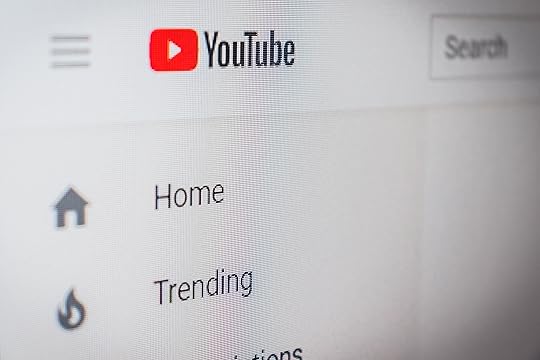 October 4, 2018
October 4, 2018Anna Hubbel, writer at AdvertiseMint, Facebook ads company

Google knows it’s already on top, but that doesn’t stop the company from finding even more growth opportunities. According to CNBC, Google is giving advertisers new ways to target audiences through YouTube search queries. The company recognizes that the video platform is widely used as a search engine and so it is carrying over the success of its search-based advertising to the viewing hub.
The opportunity is definitely there because YouTube is already a steadfast contributor to Google’s revenue. In 2017 alone, reports CNBC, YouTube generated approximately $12.8 billion in sales, with a projection of $22 billion by 2020. Google’s total 2017 ad revenue came out at $95.4 billion. The company’s overall success indicates that not only are consumers still choosing Google and YouTube as their primary search engines, but they’re also responding well to ads across both services.
How It Works
Let’s say users want to purchase a mobile video game. They search for a video review of the game on YouTube. Using their search queries to determine relevance, YouTube then displays a banner with a link the users can click to download the game directly below the video on their smartphones. The sponsored links would work similarly for showing banners with movie showtimes or trip bookings. The basic applies to any search query.
Making Video Work Better for Advertisers

The YouTube perks don’t stop there. According to CNBC, YouTube is also partnering with third-party market research company IRI to track ad campaign metrics. This partnership will help better inform the overall performance of campaigns on YouTube.
“What we’re announcing at Advertising Week is really a doubling down, really a solution to make a video more actionable and to allow advertisers to measure success,” Tara Walpert Levy, Google’s vice president of agency and brand solutions, said in the CNBC article.
By offering more performance metrics, YouTube will help advertisers further boost brand awareness and learn more about how they can adjust their campaigns as needed.
Although Google is consistently successful, both as a search engine and as an advertising platform, it still has competitors. Specifically, Amazon has been growing as a space for advertising, giving Google reason to re-examine its existing advertising options and tools. Recently, Amazon partnered with Snapchat to offer a visual search tool, which allows Snapchatters to point their camera at an object to then find it on Amazon. Lucky for Google, it has its own visual platform, YouTube, to expand.
“The advertising ecosystem has always been incredibly competitive,” Levy told CNBC. “The appeal of Amazon really validates what we are doing and talking about today, the importance of measurement, the importance of driving action on a platform.”
Google has been paying more attention to YouTube lately. A few weeks ago, Google released the new video version of Showcase Shopping format, which allows advertisers to incorporate YouTube videos into paid search ads. Before that, Google allowed all content creators to run non-skippable ads. And over the summer, Google introduced a new creative suite for YouTube storytellers, which includes tools like video experiments, video creative analytics, director mix, and video ad sequencing. The company, recognizing the popularity of video, is molding the YouTube universe so that advertisers can benefit from it even more.
YouTube is the second largest search engine in the US, CNBC reports. Approximately 60 percent of consumers turn to YouTube to learn more about a product they searched for on Google. It makes sense that Google would want to capitalize on its video search platform.
Consumers often forget that Google owns YouTube. Regardless of what other video platforms come out, YouTube has never faltered as users’ primary choice. But Google is smart enough to know it needs to continue improving the platform to keep advertisers interested so it can maintain its spot towards the top of the food chain. And certainly, advertisers will welcome whatever new products Google throws their way, ready to hop right on the train to success.
Written by Anna Hubbel, writer at AdvertiseMint, Facebook ads company
The post Google Is Expanding Search-Based Advertising to YouTube appeared first on AdvertiseMint.
October 3, 2018
Google Is Lifting Part of Its Cryptocurrency Ad Ban
 October 3, 2018
October 3, 2018Anna Hubbel, writer at AdvertiseMint, Facebook ads company

According to CNBC, Google will now allow regulated crypto exchanges to buy ads. The updated policy takes effect this month and only allows ads to run in the United States and Japan.
Cryptocurrency ad buyers first learned about Google’s ban on ads promoting initial coin offerings (ICOs), wallets, and trading advice back in March. Twitter and Facebook were also implementing bans for these types of ads. However, Facebook lifted its ban back in June, implementing new stipulations, such as submitting an application with public background information about the business. Google appears to be following a similar pattern, allowing some leeway while still keeping strict rules in place.
Under the updated policy, advertisers must apply for certification to deliver cryptocurrency ads to US and Japan audiences. Although the policy applies to all advertisers globally, ads can only run in these two countries.
Cryptocurrency Confusion
Social media platforms appear to be uncertain of their stances on cryptocurrency ads. While digital currency has demonstrated potential for great financial flourishing, there are also a lot of unknowns. People who are not entirely familiar with how the system works are susceptible to frauds and scams, which could result in devastating repercussions. Companies like Google need to be extra careful when dealing with cryptocurrency ads because if it allows a scam company to run ads, audiences could leave for a different platform where they feel safer.
“We don’t have a crystal ball to know where the future is going to go with cryptocurrencies, but we’ve seen enough consumer harm or potential for consumer harm that it’s an area that we want to approach with extreme caution,” Scott Spencer, Google’s director of sustainable ads, told CNBC.
The new policy should not affect Google’s recent ban of crypto-mining apps on the Google Play Store. The company announced the developer policy update over the summer. Crypto-mining is the practice of using enormous amounts of processing power to quickly obtain virtual currencies or “digital coins.”
While Google and Facebook appear to be making adjustments to their policies on cryptocurrency, Twitter so far seems set in its ways.
“We are committed to ensuring the safety of the Twitter community,” Twitter told The Verge back in March when it announced the ban.
Since there is no clear answer to the future of cryptocurrency, the best option seems to lie in compromise. Companies like Google want to provide positive experiences not just for users but also for advertisers. Legitimate cryptocurrency companies do exist, so it doesn’t seem fair to cut them off entirely. In fact, according to Forbes, 70 percent of institutional finance executives say cryptocurrency is here for the long haul.
Greenwich Associates conducted the survey of the institutional finance executives that discovered the findings. “We’ve had a terrible market for crypto this year, but people are still coming out with a lot of great innovation and a lot of great ideas,” Richard Johnson, a vice president in Greenwich Associates’ Market Structure and Technology group, told Forbes.
In other words, honest advertisers who want to promote cryptocurrency should have the opportunity to do so, and they shouldn’t be punished for the unethical and illegal behaviors of dishonest advertisers. Legitimate advertisers should take comfort in the fact that Google and Facebook are taking the necessary measures that will allow them to advertise on their platforms.
That being said, Google and Facebook should continue to proceed with caution. Facebook has already been in the hot seat one time too many for breaches to users’ online security. Recently, Facebook was hacked, forcing 90 million users to log back into their accounts. The dust hasn’t even quite settled yet from the Cambridge Analytica scandal, when users discovered their data were used to create manipulated messages during the 2016 US Presidential Election. It only makes sense that online security be a number one priority for all major platforms.
Luckily, Google has not been an accidental player in any massive data breaches like Facebook as of yet. As long as the company continues to be alert and proactive as it has been, both advertisers and users alike will be protected.
Written by Anna Hubbel, writer at AdvertiseMint, Facebook ads company
The post Google Is Lifting Part of Its Cryptocurrency Ad Ban appeared first on AdvertiseMint.
New to Facebook: Facebook Stories Ads
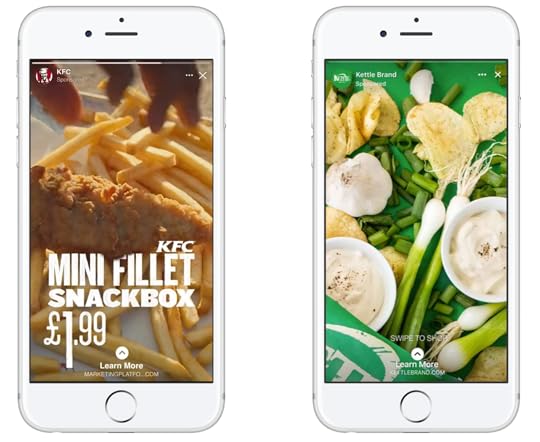 October 3, 2018
October 3, 2018Anna Hubbel, writer at AdvertiseMint, Facebook ad agency

Ads are now rolling out to Facebook Stories. Facebook announced that Facebook Stories ads are now available to all advertisers, a format that has proven successful for advertisers using Instagram Stories ads.
Facebook says it is expanding the ad format to its Stories platform because it has found that 68 percent of users say they use Stories on at least three apps on a regular basis. Additionally, 63 percent of users say they intend to use stories even more going forward.
The company expects users to be as receptive to Facebook Stories ads as they have been to ads on Instagram Stories. A Facebook-commissioned study found that 62 percent of users have become more interested in a brand or product they saw in Stories. Additionally, over 50 percent of surveyed users said they’re driven to make more online purchases viewing a story, and 34 percent even said Stories influenced them to go to a physical store to look for products they saw. With over 300 million daily users, Facebook Stories has the potential to help advertisers reach even more audiences.
Facebook says the new ad format supports the same objectives as those supported by Instagram Stories ads. Reach, brand awareness, video views, app install, conversion, traffic, and lead generation are all supported objectives. Advertisers also get access to the same targeting and measurement resources as they do for Instagram Stories ads.
So far, Facebook says the ad format expansion is showing promising results. Advertisers for clothing company Tentree and dating app Skout saw more customer actions at a lower cost when they added Facebook Stories ads to their Instagram Stories campaigns.
Facebook also recently announced new video options: In-Stream Reserve and ThruPlay.
Written by Anna Hubbel, writer at AdvertiseMint, Facebook ad agency
The post New to Facebook: Facebook Stories Ads appeared first on AdvertiseMint.
October 2, 2018
Snapchat Announces Enhancements to Shoppable Ads
 October 2, 2018
October 2, 2018Anna Hubbel, writer at AdvertiseMint, Facebook advertising agency
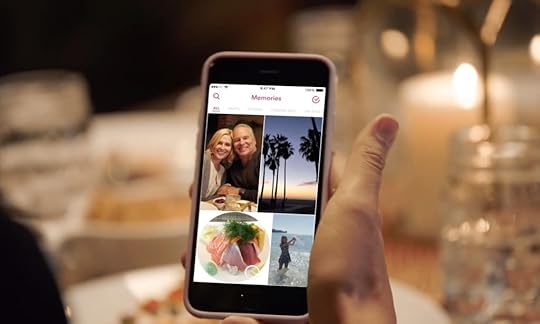
Snap Inc. recently announced new enhancements for Shoppable Ads, just in time for the holiday season. Advertisers will now be able to use Collection Ads, product catalogs, and advanced pixel targeting.
With Collection Ads, advertisers can feature multiple products in a visually pleasing, shoppable format through Snapchat’s self-serve buying tool. Shoppers will be able to easily tap on products in the ad to learn more about them.
The product catalog enhancement allows advertisers to upload existing product feeds to automatically generate Story Ads, Snap Ads, and Collection Ads. New templates for this automated ad creation are now available in Ads Manager.
The Snap Pixel, instead of only tracking general website activity, now has more advanced capabilities that allow advertisers to track more specific website behaviors. For example, an advertiser could track when a user browses a specific category, like jewelry, on the business website after clicking on a Snapchat ad.
In addition to these three enhancements, Snap announced that it is adding over 30 new Snap-certified performance agencies to assist advertisers with e-commerce, direct response, and data-driven performance marketing.
Snap made this announcement around the same time it announced pre-holiday updates to its partnership program. It also comes not long after the news of Snap’s major partnership with Amazon in the form of the product search tool.
Written by Anna Hubbel, writer at AdvertiseMint, Facebook advertising agency
The post Snapchat Announces Enhancements to Shoppable Ads appeared first on AdvertiseMint.
October 1, 2018
Facebook Introduces New Video Ad Options
 October 1, 2018
October 1, 2018Anna Hubbel, writer at AdvertiseMint, Facebook advertising agency

Facebook just introduced two new options for video ad buyers that simplifies buying and delivering video ad campaigns. With In-Stream Reserve, advertisers get more placement options for their in-stream ads. With ThruPlay, advertisers can optimize and only pay for video ads watched in full.
In-Stream Reserve
Previously in-stream ads were only delivered as mid-roll videos in News Feed or pre-roll or mid-roll videos in Facebook spaces like Watch. Facebook says advertisers have requested more variety in in-stream video ad placements. Facebook is rolling out two in-stream options:
In-Stream Reserve: Advertisers can reach users who watch videos from various publishers and creators that are highly engaging. They can buy the placements in advance on a Nielsen verified Target Rating Point (TRP) basis, and the ads can be delivered to in-target audiences.
In-Stream Reserve Categories: Advertisers can select categorized content, such as sports, fashion or beauty, and entertainment. Advertisers can buy In-Stream Reserve Categories in the same way as In-Stream Reserve placements.
“In-Stream Reserve is a great option for premium online video and TV buyers, especially for campaigns aimed at younger, harder-to-reach demographics and light TV viewers,” Facebook says in a business announcement. “It is currently available for select advertisers targeting US audiences.”
Brands have already seen the value of In-Stream Reserve placements. Nationwide was one of the first to test it.
“As Nationwide’s media mix has evolved to account for new mobile consumption habits, it’s become increasingly important to ensure our in-stream ads run against premium content on mobile platforms like Facebook,” Jennifer MacKenzie, Senior Vice President of Marketing at Nationwide, says in the announcement. “That’s why Nationwide was one of the first brands to test buying video through In-Stream Reserve, and we’re pleased with the results. We will continue to look to In-Stream Reserve as a way to engage with our key audiences in meaningful places to tell Nationwide’s story.”
Facebook says it’s also testing the option to advertise in just one show or as an exclusive advertiser for a show. It’s trying it out on a select group of original Watch shows.
ThruPlay
Since advertisers primarily use video to tell a story and foster brand loyalty, Facebook’s new ThruPlay option helps optimize video ads for complete viewing. Advertisers only pay for video ads that users watch to completion or at least for the average 15-second duration.
ThruPlay video placements are available in Facebook, Instagram, and Audience Network as in-stream, stories, and feed formats.
Buick says it has already used ThruPlay for better reach and improved completion rates.
“With ThruPlay, we were able to reach audiences who watched our video all the way through, achieving greater efficiency, scale and completion rates,” says Buick’s Social and CRM Lead Mallory Woodrow in the announcement.
Facebook says ThruPlay will roll out now to Ads Manager and will be globally accessible in the coming weeks.
Written by Anna Hubbel, writer at AdvertiseMint, Facebook advertising agency
The post Facebook Introduces New Video Ad Options appeared first on AdvertiseMint.
September 28, 2018
90 Million Facebook Users Forced to Log Back into Profiles after Major Hack
 September 28, 2018
September 28, 2018Anna Hubbel, writer at AdvertiseMint Facebook advertising agency

Facebook alerted the public of a major hack this morning that may have given hackers or third-party threats access to an estimated 50 million user profiles. The Verge reports that Facebook is making 90 million users log back into their accounts today as a safety measure.
The company’s security update says the engineering team discovered the security threat on September 25.
While the investigation has yet to reveal more substantial details, Facebook says the attackers “exploited a vulnerability” in the platform’s code affecting the “View As” feature. This feature allows users to view their profile as other users see it. The exploitation allowed the hackers to steal Facebook access tokens, which made it possible for them to overtake users’ accounts. Facebook says “access tokens” are like “digital keys” that keep users logged into their accounts so they don’t need to re-enter their login information every time they visit the platform.
Facebook says it has already taken action, including fixing the vulnerability and informing law enforcement. Additionally, Facebook has reset the access tokens of the approximately 50 million accounts that were affected by the hack. The company is taking the precautionary measure of resetting the tokens for an additional 40 million accounts subject to a “View As” look-up in the past year. A grand total of about 90 million users will be forced to log back into any accounts or apps connected to their Facebook login. Users will see a notification at the top of News Feed after they log back in describing the incident.
As a final precaution, Facebook is also temporarily turning off the “View As” feature.
“This attack exploited the complex interaction of multiple issues in our code,” Guy Rosen, VP of Product Management, says in the security update. “It stemmed from a change we made to our video uploading feature in July 2017, which impacted ‘View As.’ The attackers not only needed to find this vulnerability and use it to get an access token, they then had to pivot from that account to others to steal more tokens.”
The investigation has yet to uncover whether any user accounts were misused or subject to information theft as a result of the hack. Facebook says it also doesn’t know who is responsible for the attacks or where they stem from.
“We’re working hard to better understand these details — and we will update this post when we have more information, or if the facts change,” says Rosen. “In addition, if we find more affected accounts, we will immediately reset their access tokens.”
Facebook says users should not have to reset their passwords, but if they encounter any issues logging back in, they should visit the Facebook Help Center.
Abuse of this magnitude is a big blow to the company, especially after Cambridge Analytica harvested information from 80 million profiles. This latest hack emerges only six months after that discovery. However, Facebook has been quicker to take action and inform users this time around.
Written by Anna Hubbel, writer at AdvertiseMint Facebook advertising agency
The post 90 Million Facebook Users Forced to Log Back into Profiles after Major Hack appeared first on AdvertiseMint.
Your Customer Satisfaction Scores Can Make or Break Your Facebook Ad Campaigns
 September 28, 2018
September 28, 2018Anna Hubbel, writer at AdvertiseMint, Facebook advertising agency

Businesses running ads on Facebook can now see their customer satisfaction scores. Recently our account managers discovered a new dashboard that shows a satisfaction score provided by customers who bought products through a Facebook ad. If a business’s score reflects a lot of dissatisfaction, Facebook will penalize the business. We first learned about the satisfaction score back in June. It appears Facebook has now officially rolled out the feature that allows businesses to monitor their scores.
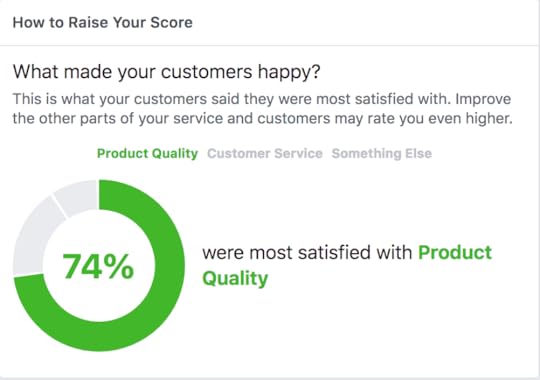 Satisfaction score provided by customers
Satisfaction score provided by customersHow It Works
According to a message Facebook sent to AdvertiseMint introducing the feature, the dashboard shares with businesses a score calculated from customer feedback. Facebook collects that feedback from a representative sample of users who purchased in direct response to Facebook ads. Facebook then takes that feedback to generate an overall score for the business on a scale of zero to five.
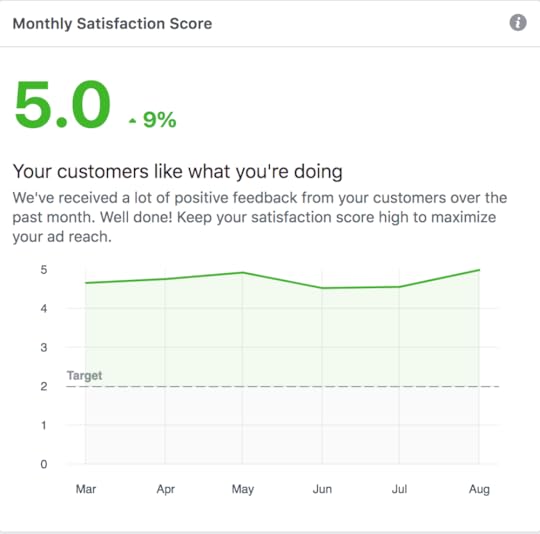 The satisfaction score ranges from zero to five
The satisfaction score ranges from zero to fiveIf the score drops to two or under, the ad cost will rise and the reach will decrease. If a business maintains a low score, Facebook will increase penalties each month until that score is improved. If the score drops to one or less, the business will be unable to run ads on Facebook’s platform.
The dashboard allows businesses to monitor their customer score and see reviews from customers.
“We hope you’ll use this information to improve your service and help us build trust on Facebook,” Facebook said in its message with the rollout. “This will create a better experience for both you and your customers.”
As previously mentioned, we learned back in June that Facebook was gathering customer feedback to identify poor experiences with businesses that run ads on the platform. Facebook began this practice to crack down on platform abuse by advertisers. To solicit feedback, Facebook sends a notification to users who made purchases after clicking an ad, The Verge originally reported.
Facebook doesn’t just rate businesses. Back in August, Facebook released a new rating system for measuring users’ trustworthiness on a scale of zero to one.
Written by Anna Hubbel, writer at AdvertiseMint, Facebook advertising agency
The post Your Customer Satisfaction Scores Can Make or Break Your Facebook Ad Campaigns appeared first on AdvertiseMint.
E-commerce Is Coming to Snapchat with Amazon Product Search Tool
 September 28, 2018
September 28, 2018Anna Hubbel, writer at AdvertiseMint, Facebook ads company agency
 Rawpixel / Unsplash
Rawpixel / UnsplashRecently, Snap Inc. made a smart business move. The company announced a new Amazon product search tool involving the Snapchat camera. Users can point their Snapchat camera at an object to find it on Amazon. They can then buy the item directly through the Snapchat app. Snap made the announcement in a blog post earlier this week.
This new partnership with Amazon will make digital shopping less of a textual experience, where users type what they’re searching for, and more of a seamless visual experience. This move may have come just in the nick of time for the company. Since the start of 2018, Snap’s stock has been down over 35 percent. According to CNBC, since the visual search announcement, the stock bumped up approximately three percent. Snap says it’s only now testing the new visual search tool and rolling it out slowly.
How It Works
Snap says the visual search tool is “super easy to use.” When users point their cameras at the product or barcode and long-press on the camera screen, an Amazon card will appear, containing a link for that item or similar ones listed on Amazon. Users can visit the Amazon app or Amazon.com to buy the item or to browse through Amazon’s relevant listings.
This new way to shop through Snapchat could be revolutionary for the social networking app as it struggles to stay competitive. Its main rival, Instagram, recently rolled out new shopping features for its app, giving it a leg up in social e-commerce. However, Snapchat’s new visual search tool could make it a more tempting prospect for business owners.
Although Amazon’s selling platform is massively popular with significant potential for success, it’s also challenging to stand out in the crowd. If business owners are building reputations for their products sold on Amazon, the visual search tool could be a major boost for their exposure.
“Snapchat has always been the fastest way to communicate, and now it’s the fastest way to shop,” Snap said in its blog post.
Social Media Shopping
Laura Heller, a Forbes contributing writer, notes in an article that the recent releases of e-commerce tools by both Snapchat and Instagram are likely going to increase purchases made on social media.
“Consumers are increasingly being served up ads on social media, but shopping directly from popular apps has been slow to catch on, hindered by technology that takes too many steps,” says Heller. “But this new tool, paired with the recent release of Shopping in Instagram Stories, could help to change that.” She adds, “For Snap, there’s a clear goal of boosting revenue, but for Amazon, the payoff is likely more complex, which is true of most Amazon’s initiatives.”
Although Amazon is in no weak position, it can still benefit from the partnership with Snapchat. Businesses that do not yet sell products through Amazon but enjoy the Snapchat app may decide the visual search tool is reason enough to use the e-commerce site for their selling needs. As a result, they may also decide to explore Amazon’s advertising offerings, a market Amazon is currently trying to grow, in order to stand out in the visual search results. But whether businesses that run ads to boost their visibility on Amazon will receive more exposure in the search results of the new visual tool on Snapchat is unknown at this time.
Written by Anna Hubbel, writer at AdvertiseMint, Facebook ads company agency
The post E-commerce Is Coming to Snapchat with Amazon Product Search Tool appeared first on AdvertiseMint.



